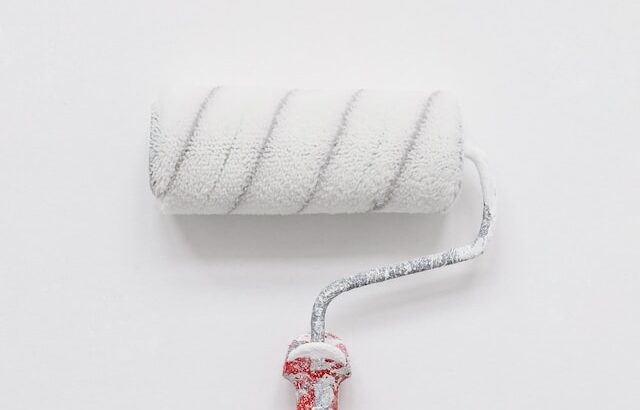A fresh coat of exterior paint can add significant curb appeal to your home. It can also protect the siding from moisture and sunlight damage. It is a project that requires professional painting skills and experience. Before choosing a contractor, ask for references from past clients.

A professionally painted home not only increases curb appeal but it can also increase resale value. It’s worth the investment. Contact Exterior Painter Cincinnati for professional help.
The paint industry has moved away from traditional oil-based paints to water-based acrylic and latex paints. These newer paints can withstand moisture and dirt, and they have less odor than oil-based paints. They are a good choice for exterior surfaces and can be used on wood, metal, and vinyl siding. However, if you want to use alkyd paint, be sure to follow the instructions on the label carefully. If you’re not familiar with these paints, ask your local home improvement store for advice.
Alkyd paints are durable, long-lasting, and provide a beautiful finish for many surfaces, including stucco ceilings and doors. They also resist fading and chipping. They are available in a wide variety of sheens, from matte to high gloss. They are easy to apply and require a brush, roller, or sprayer. They dry quickly, but they can take up to four hours to cure. In addition, they require the use of mineral spirits or turpentine for thinning and cleanup. These solvents are toxic and flammable, so you should work in a well-ventilated area.
Unlike traditional oils, which are thick and dry to an uneven sheen, alkyd paints dry to a smooth sheen that’s easier to clean and is more resistant to mildew growth. This is especially important for areas exposed to rain or foot traffic. The sheen of alkyd paint also hides minor surface problems, such as brush marks or dents, and it’s better able to withstand harsh weather conditions.
It’s important to remember that alkyd paint can’t be painted over with latex paint, because the latter’s gloss won’t adhere to an alkyd coating. In order to get the best results from your painting project, you should use a primer before applying alkyd paint. This will make it easier to hide imperfections, and it will help the next layer of paint adhere to the surface.
While these products aren’t ideal for every application, they are an excellent choice for protecting metal and wood from weather and natural wear and tear. In fact, they’re one of the most popular types of industrial and commercial surface coatings. They can also be used to protect concrete structures. The resin in these products is called alkyd, a complex oil-modified polyester that acts as the film-forming agent in some paints and clear coatings.
Acrylic latex paint
Choosing the right type of paint for your home’s exterior is an important decision that can affect its longevity and appearance. The best choice is acrylic latex paint, which dries quickly and resists moisture damage. It also offers good adhesion to a variety of surfaces and is easy to touch-up. In addition, it is resistant to fading due to sunlight and can be easily cleaned with a mild detergent. This makes it ideal for exterior painting projects.
Acrylic latex is a water-based paint, so it is non-toxic when dry. However, it can be toxic when used improperly. When applying the paint, it is important to wear nitrile gloves and use a respirator mask to avoid inhaling the fumes. You should also make sure that the paint you purchase is free of lead, which can be harmful if inhaled. Look for a label with “lead-free” or a warning symbol to ensure that it is safe to use.
When applying the paint, it is important to prep the surface. Clean walls, fill cracks and holes, and sand where necessary to get the best results. It is also important to choose the right brushes and rollers. For example, synthetic brushes are better for water-based paints, while natural bristle brushes offer a smoother finish. Finally, it is a good idea to apply multiple thin coats rather than a single thick one, as this will help the paint dry evenly.
It is important to know that some brands of acrylic paint can be used indoors or outdoors, but others are only intended for outdoor use. Exterior acrylic paint is made with weatherproof additives, so it is more durable than regular interior acrylic. However, it is still important to keep in mind that the paint may lose its integrity if exposed to extreme heat or cold.
While most painters consider acrylic paint to be the best option for home exteriors, many homeowners are also beginning to use latex paints. Latex paints have many benefits, including their quick drying time and ease of application. These paints are also available in a wide range of colors, so you can find the perfect match for your home.
Epoxy paint
Epoxy paint is a special type of floor coating that can be applied to concrete or other surfaces. It offers a hard, durable finish that is easy to clean and resists chemicals, oils, moisture, and heat. It also resists scratches and abrasions. It is available in a variety of colors and unique mixes, including metallics. Epoxy is a good option for garages, workshops, and other areas that are exposed to heavy foot traffic or greasy spills. It can also be used as a base coat for floors in saunas and bathrooms.
Epoxy can be mixed and applied in a similar way to regular floor paint. It is important to follow the directions carefully and apply several coats. Each coat needs to dry for at least four hours before applying the next. It is best to use a brush or roller, rather than spraying. Spraying is less accurate and can damage the epoxy coating.
Before you begin to apply the epoxy, you should prepare the area. Start by cleaning the surface with water and degreaser. Then, scrub the floor with an electric power scrubber or by hand until it is completely clean and free of grease and oil. You should also patch any cracks or holes in the floor before you apply the epoxy.
The epoxy is available in both solvent-based and water-based versions. Water-based epoxy paints are typically less toxic and easier to apply. However, they may yellow over time and may not be as durable as a solvent-based version. If you are planning on using the epoxy for a heavy-traffic area, consider choosing a solvent-based product.
You can purchase epoxy paint at any home improvement store. If you’re not sure which kind to choose, ask a professional for advice. He or she can help you choose the right type of epoxy for your specific project. In addition, you can buy a high-quality product online. Be sure to look for one with a warranty and an expert support center. Also, be sure to test a small portion of the epoxy on your surface before applying it to the entire area.
Benjamin Moore
Whether you’re painting an entire home or just a few rooms, Benjamin Moore has the right paint for your project. These high-quality paints are durable, long-lasting and easy to clean up. They also resist stains, mildew and other damages. In addition, they’re available in a variety of sheens to suit your needs. Before you choose a paint, make sure your surfaces are prepped properly to avoid highlighting blemishes. Fill any dents or cracks, caulk any gaps, and sand thoroughly to get a smooth finish.
Using a premium paint on exterior surfaces can greatly enhance your home’s curb appeal. Shamrock Paints is a leading specialty retailer of Benjamin Moore paint, offering high-quality products and expert advice to help you achieve your dream home. The company’s expert staff will assist you in selecting the perfect color for your next project and answer any questions you might have.
Benjamin Moore is a leader in interior and exterior paint, with an extensive selection of colors and finishes. Its products are also eco-friendly and low-VOC. You can use the online Personal Color Viewer to see how a color will look on your walls or cabinetry, or visit a local Benjamin Moore store to consult with a professional.
AURA Interior is the brand’s ultra-premium interior paint, engineered with Gennex(r) Color Technology and patented Color Lock(r) technology to ensure rich, consistent color for years. It’s formulated to self-prime on most substrates, and it resists mildew, fading, chalking and peeling. It’s also formulated to dry in temperatures as low as 35°F, helping you extend your painting season. It’s available in all 3,500 colors and three sheens, and it covers scuffs and marks easily. It is also sandable and can be used on all interior surfaces, including trim, doors and cabinets. It’s a great choice for bathrooms, because it holds up to moisture and withstands scrubbing and washing.

